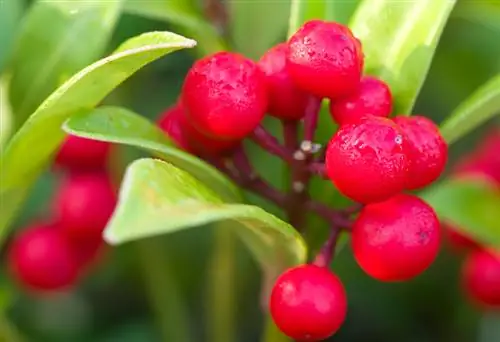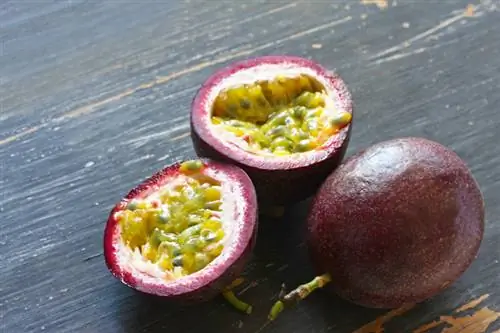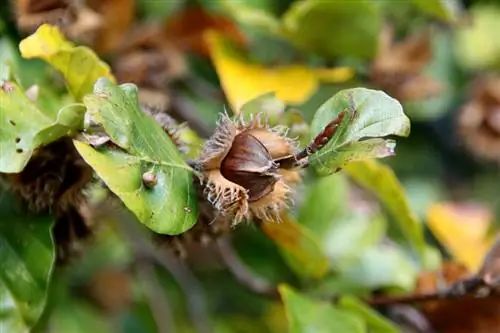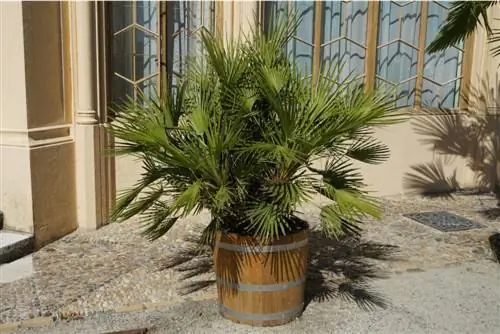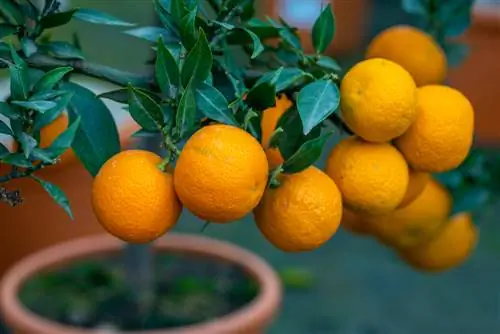- Author admin [email protected].
- Public 2023-12-16 16:46.
- Last modified 2025-01-23 11:20.
The Skimmia is known for its valuable fruit decorations. With this she brings color into the dreary winter time. Whether as a winter decoration on the balcony, in the garden bed or in the apartment - what should you know about the fruits of the skimmie?
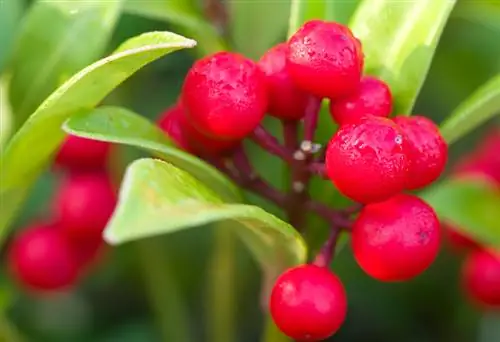
What properties do the fruits of the skimmie have?
Skimmia fruits are round, shiny and smooth-skinned drupes that can be red, pink or almost black, depending on the variety. Only female plants produce fruit, although there are now also hermaphrodite cultivars.
External characteristics of fruits
The fruits of the skimmie are colored as red as blood or, depending on the variety, sometimes pink or almost black. They stand on long, brown-red stems and skillfully attract attention.
Here are her other features:
- standing together in umbels
- drupes
- round to egg-shaped
- shiny
- smooth-shelled
- contrasting the dark green foliage
- 6 to 12 mm in diameter
- contain 1 to 5 leathery chambers, each with a seed
- Seeds are egg-shaped
Only female plants produce fruit
You shouldn't buy a skimmia at the garden center expecting to see fruit in the fall. The reason: Not all skimmias produce fruit! The skimmia is dioecious. Only female plants produce fruit.
Female varieties on the market include 'Temptation' and 'Veitchii'. They are often declared as 'fruit skimmias'. The male varieties include 'Marlot', 'Rubella' and 'Finchy'. These are called 'flower skimmias'.
Distinguish between male and female plants
The best way to distinguish between male and female specimens is during the flowering period. The male flowers have a much more intense scent than the female flowers. If you are sure, you can safely cut off the withered male flowers.
Now there are also hermaphrodite skimmias
Hermaphroditic cultivars have also been available on the market for several years. They produce bisexual flowers. Like those of the female plants, their fruits appear from October and last until March. These self-pollinating varieties are called 'Skimmie reevesiana'.
What factors contribute to a rich fruit cover?
- sunny to partially shaded location
- fertilize regularly
- water abundantly until autumn
- do not cut off female inflorescences
- thin out immediately after flowering
- at least 1 male specimen for every 5 female specimens
Tip
Warning: As tempting as these stone fruits may look. They are slightly poisonous due to the alkaloids contained in the stone core!

